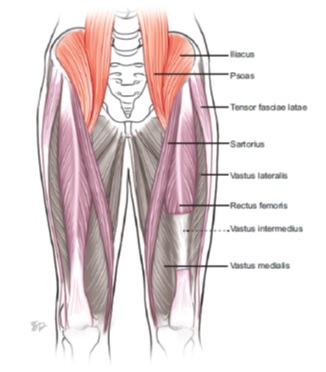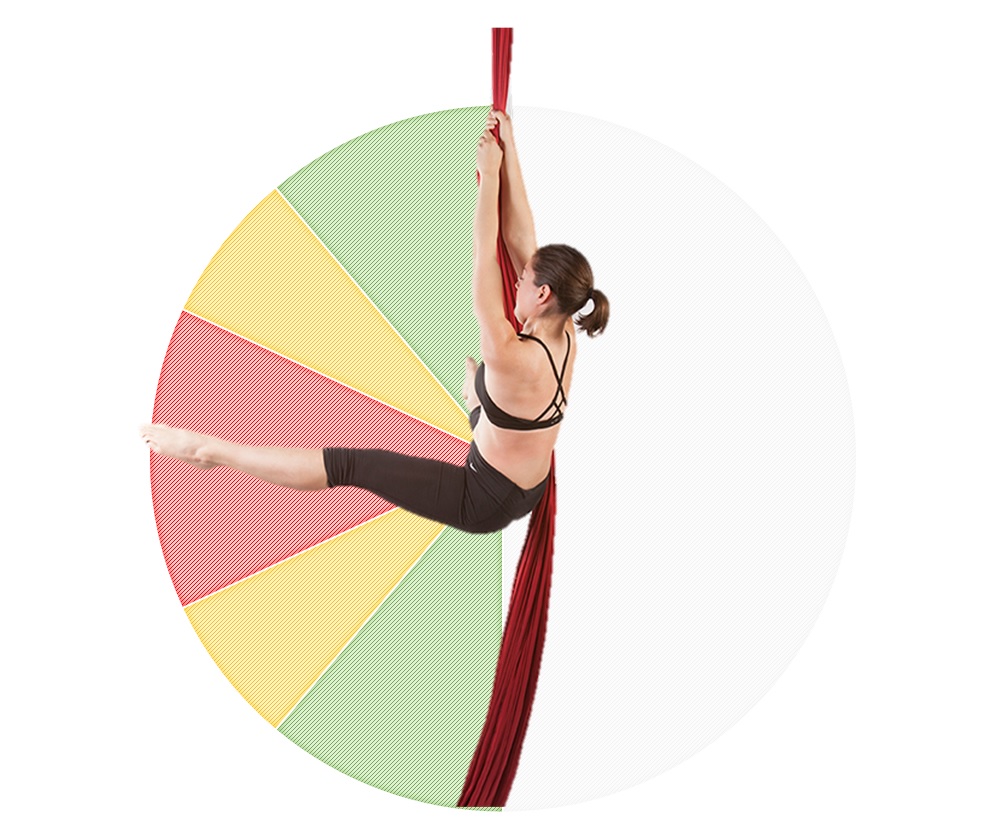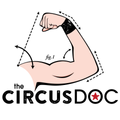Do you have plenty of flexibility, but still have a micro-bend in your leg? What’s going on and what can you do?!?
As always, I like to start with the basics. Let’s look at the anatomy to understand how we lift our legs and why it can be so darn hard to lift them while keeping your knees straight.
 The muscles that lift your legs are your hip flexors. You have “primary” and “secondary” hip flexor muscles. The primary muscles in this case are the psoas and iliacus whose main function is to flex your hips and attach close to the hip joint allowing for the best positioning of the joint in the socket. Together they are known as the iliopsoas.
The muscles that lift your legs are your hip flexors. You have “primary” and “secondary” hip flexor muscles. The primary muscles in this case are the psoas and iliacus whose main function is to flex your hips and attach close to the hip joint allowing for the best positioning of the joint in the socket. Together they are known as the iliopsoas.
The secondary hip flexors add oomph to the motion. These are longer, larger muscles that bring power to the precision movement of the iliopsoas. These muscles in order of how much they help, are the rectus femoris (part of your quadriceps muscle) the tensor fascia latae (TFL), and the sartorius.
For all of the hip flexor muscles to work best, you need to hold one end still so that they can move the hip without extra motion. All four hip flexor muscles attach on your pelvis (and the psoas also on the spine). So, a stable core is needed to make sure these muscles are anchored and ready to lift your legs.
Each of your secondary hip flexors then span across the hip joint and insert via their tendons down below your knee joint. They cross both the hip joint AND the knee joint.
Yes. I just said that 3 of your hip flexor muscles cross the knee joint. And YES this is VERY IMPORTANT to our conversation about micro-bends
So for these muscles to work best at your hip, we also need to hold the knee still. This way the effort from the contraction will go into hip flexion instead of changing the position of the knee. In this case, we are looking to hold the knee straight (I mean right? That is why you are looking at this blog post…).
But, why is it so hard? Well, your rectus femoris is a knee extensor which is great, but as the hip flexes towards and past 90 it gets worse at doing that part of it’s job. The the bad news is, it’s actually a better hip flexor with the knee bent. Your sartorius and tensor fascia latae are both knee flexors. Thankfully, they aren’t that great at their job, but as soon as you start asking them to work you better be thinking about keeping your knee straight!
Now that we’ve got a little idea about the anatomy, let’s talk about lifting our legs and how they work.
Legs are heavy! Did you know that each leg is approximately 17.5% of your body weight? That means that when you are lifting both legs you are lifting 35% of your body weight. The closer your legs are to your body the easier they are to lift. This means that the middle of the range of motion into an inversion is the hardest to lift your legs through, and if you are in a pike it’s even harder!
Below we will go over what your challenges might be in three different stages of lifting your legs against gravity. I’m using an aerial inversion as a reference, but these hold true anytime you are lifting your legs into hip flexion against gravity.

The first ~80⁰ of hip motion
From a straight hip (0⁰ of flexion) all of your hip flexor muscles are working together. If everything goes well, they are pulling the thigh up towards the spine and pelvis. BUT for this to work, the core muscles must anchor these muscles giving them a stable base to work from. Without a solid core, these muscles become less effective.
If you have bent knees in this low range chances are you can either look to your core stability OR you might have a weak iliopsoas which will make you more dependent on your rectus femoris which works better with your knee bent (see above).
Try this exercise. In it your goal is to keep your abs flat and engaged pulling your belly button down to the ground.
First focus on your abdominals. Can you keep them down and engaged while moving bent legs? If you can, try raising bent legs and then straightening them before lowering. Concentrate on keeping your abs “in” and knees straight. Still got it? Try lifting and lowering with straight legs.
Around 70-100⁰ of hip flexion
Here your legs are acting as the longest lever arm. This is physically the most challenging on your core and your hip flexor muscles. Here your body is looking for any way it can cheat. Just when you are reaching the end of your flexibility, you are faced with the toughest range of motion for lifting your legs.
Bending your knee makes your leg easier to lift by shortening its distance away from your body, and our bodies are as smart as we are goal oriented. Often, we will bend our knees without even knowing it! Strengthening the hip flexors in this range can be the answer.
At the same time as we approach 70- 100⁰ of hip flexion most of use will also start battling some degree of stiffness of our hamstrings. This means our quads (the muscles that straighten our legs) will also have to increase their amount of engagement in this range of motion. This is why it is so easy to confuse a lack of muscle control or strength with limited flexibility.
As for motor control and muscle sequencing, the core is of course still critically important and as you approach 90⁰ the iliopsoas takes on even more importance.
This iliopsoas exercise emphasizes the importance of this strong hip flexor at and above 90⁰ of hip flexion.
Try to sit tall and not lean as you lift one or both of your legs. In a straddle, make sure your thighs are rotated into external rotation and knees point up to the ceiling throughout. (note: this artist is amazing at this exercise. #goals)
Working on “negatives” or the lowering component of a skill is a great way to gain the strength to do it well throughout your range. This works because you need less strength to slowly lower than to lift against gravity.
Try doing a bent leg inversion and a straight leg lower as slowly and with as much control as you can muster.
Above 90⁰ of hip flexion
Once you flex your hips to about 90⁰, this is where many aerialists (and hand balancers who are looking for compression) have trouble maintaining their leg extension.
Above 90⁰ the secondary hip flexors are much much less effective at their jobs (some people even argue that they don’t help at all). You are primarily dependent on your iliopsoas to lift your leg any higher. That is, unless you bend your knee. Then your rectus femoris can help, but you lose your beautiful straight leg line. It’s a tough compromise.
This exercise help you focus on the strength and control needed for mid to end range hip flexion and compression of your body without a micro bend.
Focus on pressing the exercise ball into the wall above your head. Try to keep straight legs and an engaged core. Easy? Try a smaller ball!
You’ve read this far and by now I know you are wondering; what is the answer? What can you do to improve your line and Conquer Your Micro Bend?
- Core for days
- Strengthen your iliopsoas (and then strengthen it some more!)
- Strengthen your quads at and above 90⁰ of hip flexion
- Use eccentric lowering to reduce load as you gain strength and to practice maintaining a straight leg through your full movement
Want to learn more about how your body works and understand how to optimize it? Check out online and in person learning opportunities.
